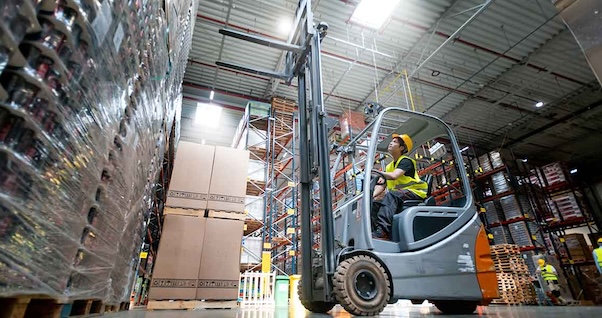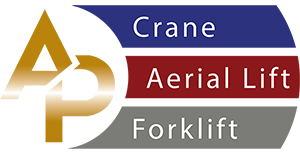
When it comes to the world of material handling and logistics, forklifts play an indispensable role in efficiently moving heavy loads. One of the key components that make forklifts so versatile and effective is the forklift mast. Lets explore the inner workings of a forklift mast, its functions, types, and the science behind its operation.
Forklifts, those sturdy workhorses of warehouses and construction sites, owe much of their lifting power to the ingenious design of their masts. A forklift mast is the vertical assembly responsible for raising and lowering loads with precision and stability. This article peels back the curtain on the marvel of engineering that is the forklift mast, shedding light on the principles and mechanisms that enable its functionality.
Understanding a Forklifts Mast
At its core, a forklift mast is a complex arrangement of hydraulic systems, mechanical components, and chains. This assembly operates seamlessly to accomplish the seemingly effortless task of lifting heavy objects. Imagine the precision required to hoist a delicate pallet of fragile goods or a massive crate of construction materials. The forklift mast performs this task admirably, thanks to the synergy of its key components.
Components of a Forklift Mast
Hydraulic System
The hydraulic system forms the backbone of a forklift mast's lifting power. It utilizes the principles of fluid dynamics to generate and transmit force. When the operator activates the controls, hydraulic fluid is pressurized, creating energy that drives the lifting process. This system ensures smooth and controlled movements, essential for handling delicate or valuable loads.
Chains and Rollers
Central to a forklift mast's operation are chains and rollers. These components work in harmony to guide the vertical movement of the mast and the attached load. Chains, made from durable materials, provide the necessary tensile strength, while rollers reduce friction, allowing for efficient motion. The precision engineering of these elements contributes to the stability and safety of the lifting process.
Lift Cylinder
The lift cylinder is the muscle of the forklift mast. When hydraulic pressure is applied, the lift cylinder extends, pushing the mast upward. This controlled expansion is what enables the precise lifting and lowering of loads. The lift cylinder's responsiveness and power define the forklift mast's overall performance.
Types of Forklift Masts
Forklift masts come in various configurations, each tailored to specific lifting needs. Let's explore some of the most common types:
Duplex Masts
The duplex mast features two sections, allowing for limited height adjustment. It is a compact and cost-effective option, well-suited for low-ceilinged environments. While it may lack the height reach of other types, its simplicity and reliability make it a popular choice for indoor applications.
Triplex Masts
Triplex masts incorporate three sections, enabling higher lift heights. This type is ideal for warehouses or facilities with taller storage racks. The triplex mast's ability to extend further while maintaining stability is a key advantage for efficiently utilizing vertical space.
Quad Masts
Quad masts, as the name suggests, comprise four sections. This advanced configuration offers impressive lifting heights, making it suitable for heavy-duty outdoor tasks. The quad mast's robust design and extensive reach make it indispensable in construction and manufacturing settings.
Take advantage of the convenience of online forklift certification, which allows participants to learn the necessary skills and information at their own speed.
How Does a Forklift Mast Work?
The intricate dance of components within a forklift mast harmonizes to create a reliable lifting mechanism. Let's break down the process step by step:
Hydraulic Fluid and Pressure
It all begins with hydraulic fluid - a specially formulated liquid that doesn't compress. When the operator activates the controls, hydraulic fluid is pumped into the lift cylinder. As pressure builds, the fluid exerts force on the cylinder, causing it to extend. This expansion is the foundational principle that drives the entire lifting process.
Lifting Mechanism
As the lift cylinder extends, it pushes against the mast's sections, gradually raising the forks and the attached load. The precision engineering of the mast's components ensures that the motion remains stable and controlled. This controlled ascent is crucial for preventing accidents and maintaining the integrity of the load.
Chain Pulley System
Working in tandem with the lift cylinder is the chain pulley system. The chains loop around pulleys at the top and bottom of the mast, providing synchronized guidance for the mast's movement. This system ensures that the mast maintains its vertical orientation, allowing for seamless lifting and lowering.
Factors Influencing Forklift Mast Performance
Several factors contribute to the performance and effectiveness of a forklift mast:
Load Capacity
The mast's load capacity determines the maximum weight it can lift safely. Exceeding this limit can lead to instability and potential accidents. Operators must be well-versed in load capacities to ensure safe and efficient operations.
Height Requirements
Different tasks demand varying lift heights. Choosing the right type of mast for the job is crucial. Triplex and quad masts are better suited for tasks requiring substantial vertical reach, while duplex masts suffice for lower height requirements.
Operational Environment
The surroundings in which a forklift operates influence mast performance. Indoor settings with confined spaces may favor duplex or triplex masts, while outdoor applications might call for the robustness of a quad mast.
Maintenance and Safety Tips for Forklift Masts
Ensuring the longevity and reliability of a forklift mast requires regular maintenance and adherence to safety guidelines:
Regular Inspection
Routine inspections identify potential issues before they escalate. Operators should visually inspect the mast, chains, and hydraulic components for wear, leaks, or damage. Timely maintenance prevents unexpected downtime and ensures safety.
Lubrication
Proper lubrication of chains, rollers, and pulleys minimizes friction and extends the lifespan of these critical components. Lubrication schedules should be followed diligently to optimize mast performance.
Operator Training
Qualified operators are key to perform tasks accurately, minimize product damage, and respond effectively to emergencies, enhancing overall efficiency.
Remember, having knowledgeable and skilled operators is a cornerstone of successful forklift mast operations.
We believe that following OSHA regulations for forklift training is critical to ensuring workplace safety. Our training curriculum covers every facet of OSHA rules, providing learners with the knowledge and skills they need to satisfy these high standards.
